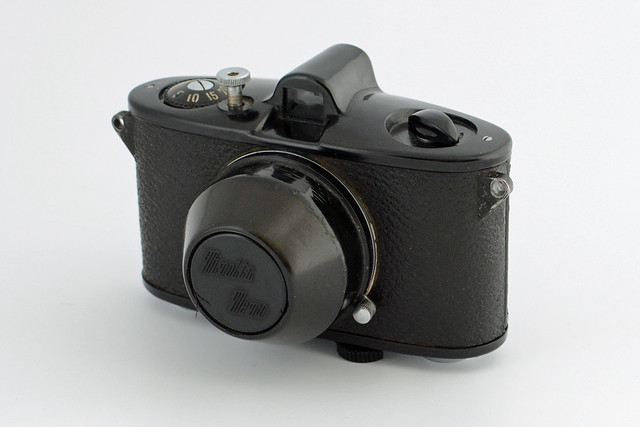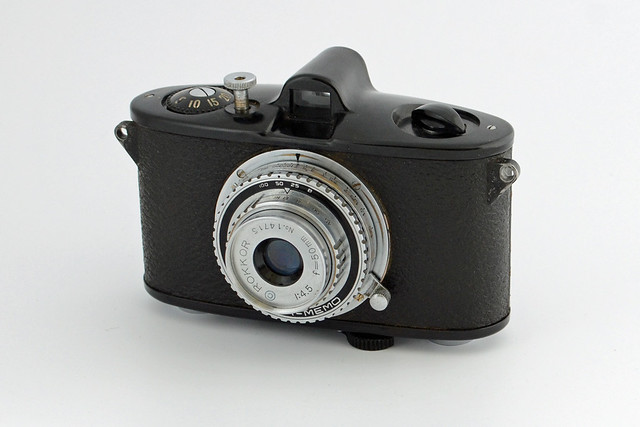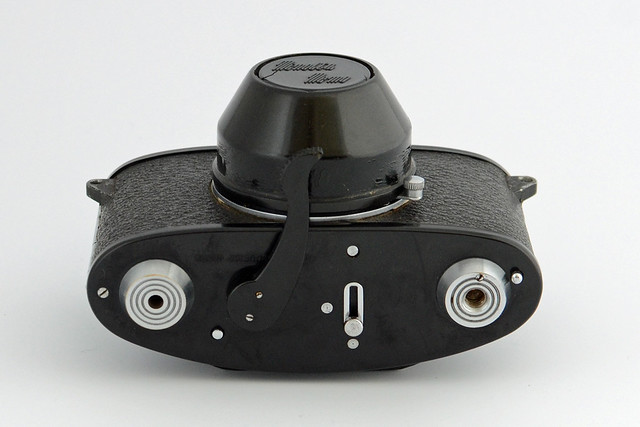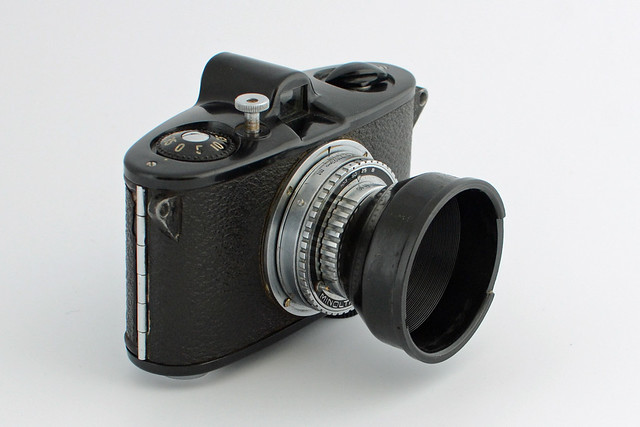Minolta Memo

|
| scanned by rebollo fr (Image rights) |
The Chiyoko Minolta Memo is a 35mm camera made by Chiyoda Kōgaku Seikō in 1949, the first 35mm leaf shutter camera made by the company which later became Minolta.
The Memo is a rather simple camera: it has a simple A2 Lames shutter with 1/25, 1/50, 1/100 speeds plus bulb. The lens, a 50mm f4.5 Rokkor, is a triplet design. The viewfinder is of the telescopic kind.
However, this camera has a couple of distinctive feature, starting with a streamlined bakelite case. The Memo also has a bottom-mounted winding lever. The lens cap is also quite distinctive: it has two parts, the lens cap in itself, and a larger cap that covers the whole lens/shutter assembly. Once reversed, this large cap serves as a lens hood, a feat also found on Werra cameras. While this camera may look like a cheap camera, it is far from being cheaply made: it is in fact quite sturdily made, and weighs 650 grams.
The Memo is the first Minolta camera to have a rapid wind lever, and one of the earliest Japanese camera to do so. When holding the camera, the lever need to be 'pushed' towards the camera, not 'pulled'. Unfortunately, this lever is also made from bakelite, a rather fragile material, and its location at the bottom of the camera makes it prone to being accidentally broken.
Aside from the telescopic finder, the top of the camera also houses the shutter release button, as well as an exposure counter and a rewind button. Most of the camera controls are located on the lens/shutter assembly: focusing, shutter speed and aperture . The bottom plate houses the rapid wind lever, as well as the door release button. Most Memo also have a "Made in occupied Japan" engraving on the bottom plate. The camera's serial number is engraved inside the camera, below the finder and is therefore only visible once the back of the camera is open.
Links
In English:
- Minolta Memo in the 70th anniversary Minolta poster, reproduced at Photoclub Alpha
- Minolta Memo among First postwar Japanese leaf-shutter 35mm cameras (archived)
Gallery
|
| ||||
|
|



